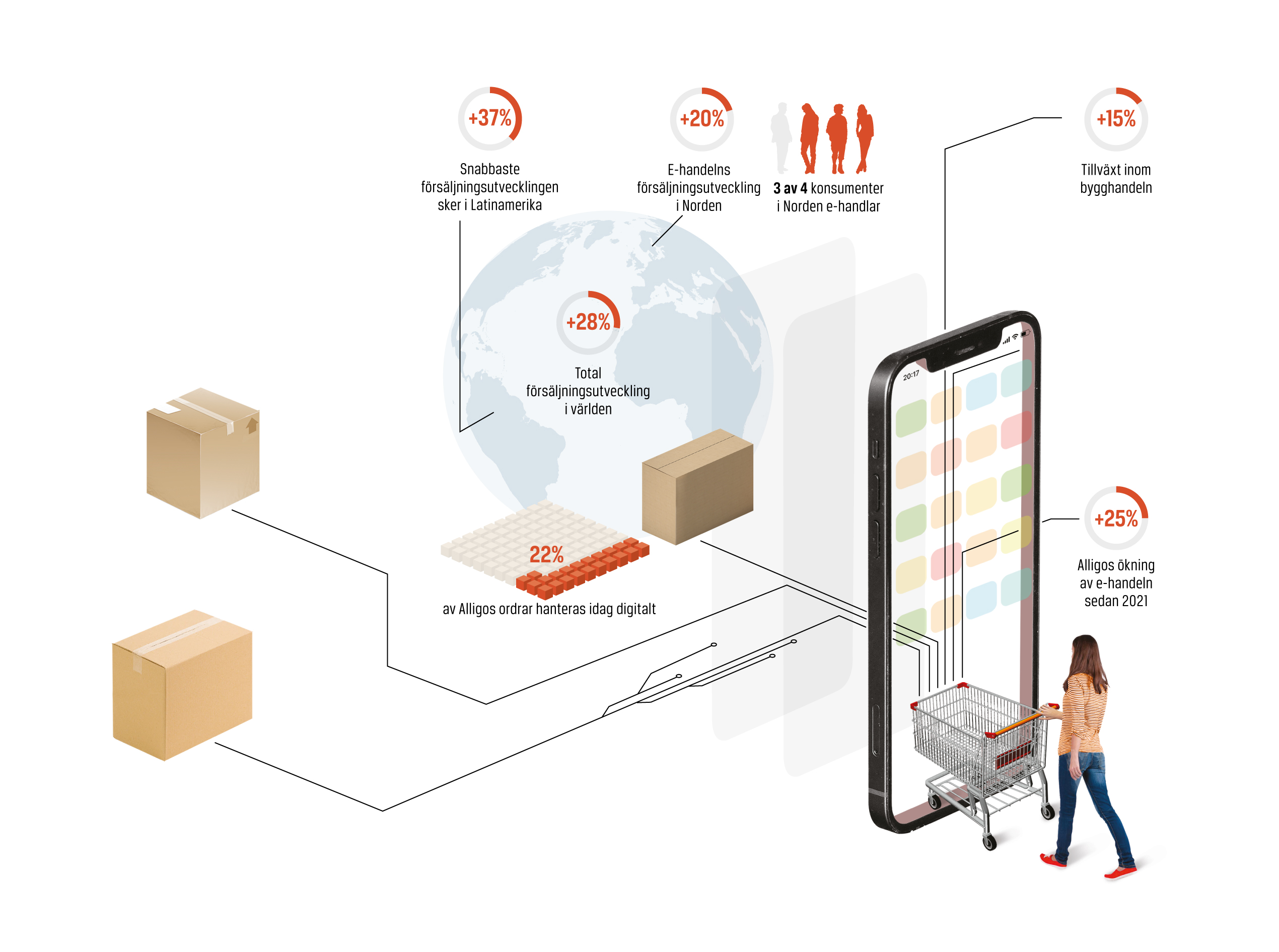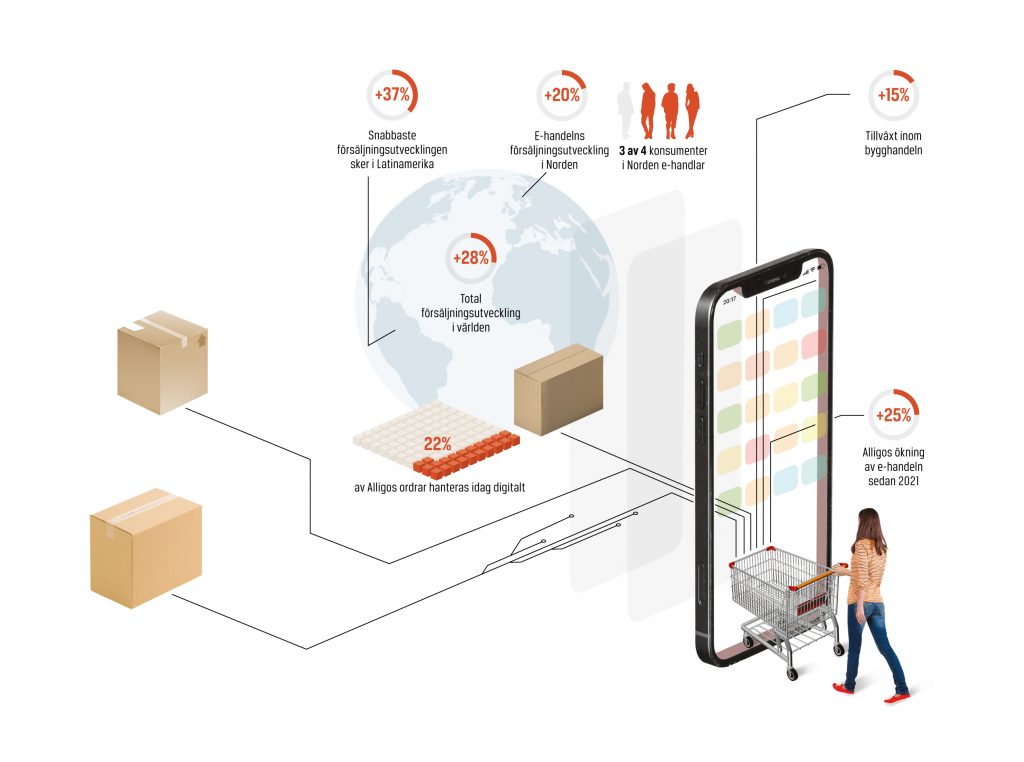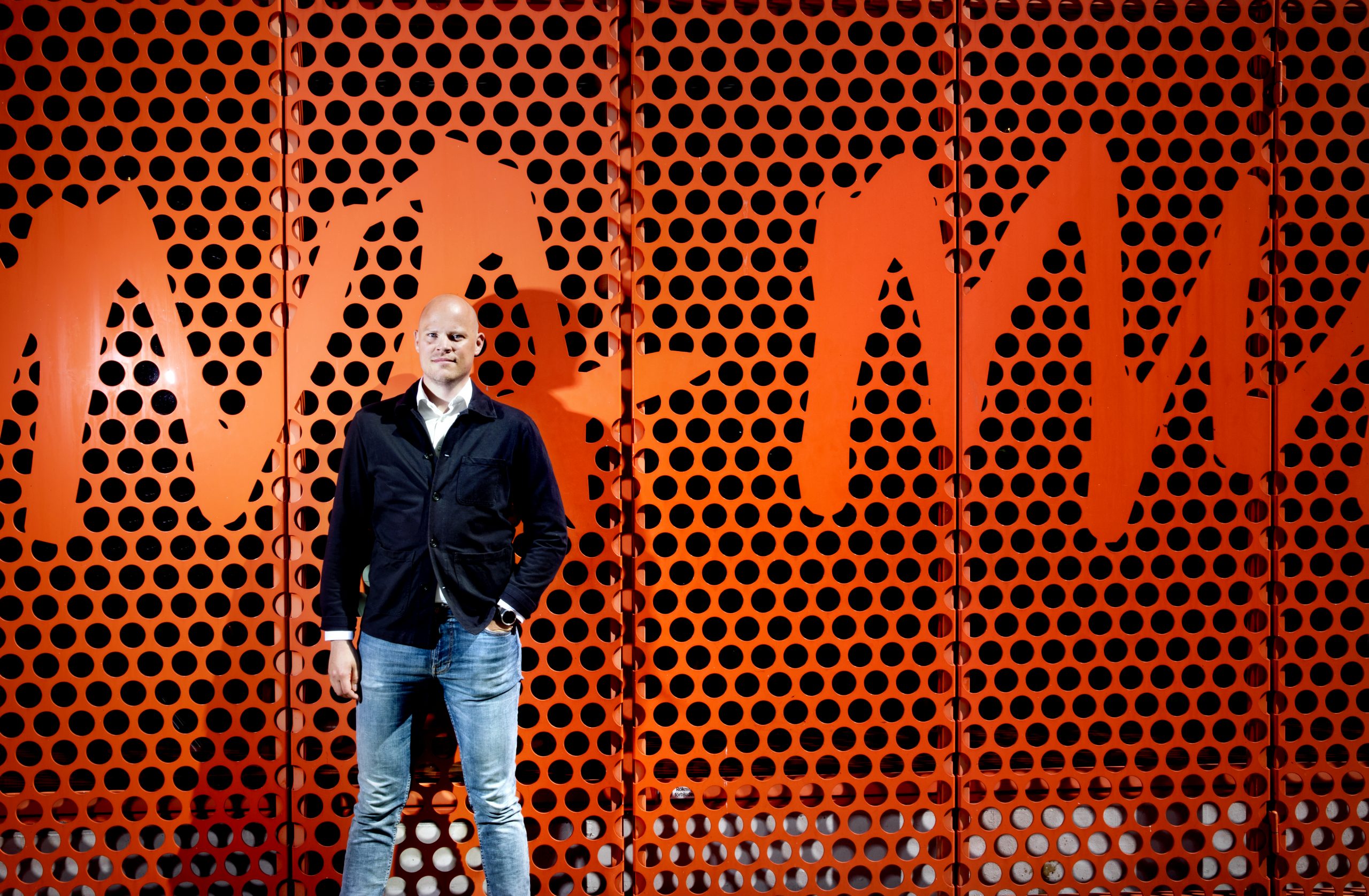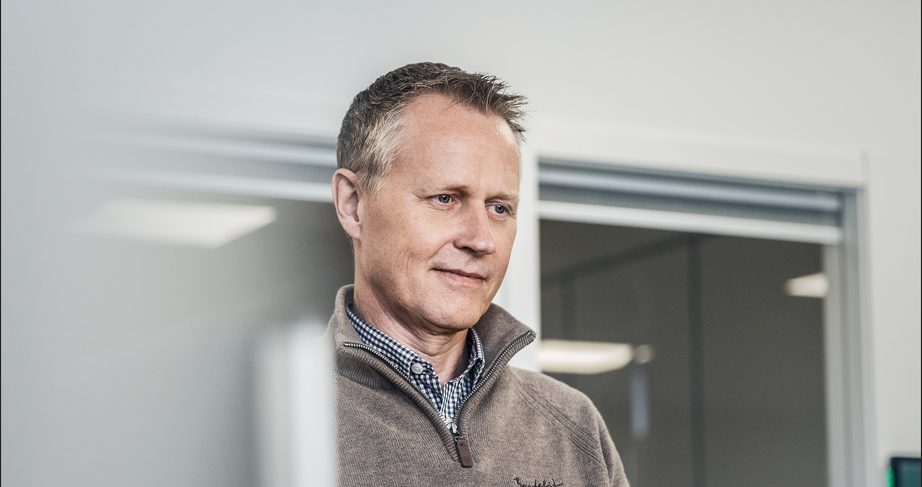How Alligo leads its industry in e-commerce
Alligo’s e-commerce is growing rapidly. “The pandemic accelerating all the current trends. All over the world we consume in new ways and we have to adapt accordingly,” says Gustaf Johansson, CIO of Alligo.
The pandemic, followed by Russia’s invasion of Ukraine, are brutal reminders of how quickly the world can change. It also underlines how important it is to have an up-to-date analysis of world affiars – which you must be prepared to constantly reexamine.
“In short, the pandemic has been like a doping agent for e-commerce and we currently see no signs of a slowdown. At the same time, we naturally need to take into account how other factors can quickly change in the wake of the dramatic global situation, such as uncertainty about interest rates and increased inflationary pressure,” says Gustaf Johansson.
The situation in Ukraine is yet to leave any mark on digital sales. When Gustaf compares Alligo’s e-commerce in 2021 with the beginning of 2022, it has increased by 25 percent. This can be put in relation to e-commerce in the Nordics, which last year increased by 20 percent. The construction trade has increased by 15 percent.
“This clearly shows the speed at which we are moving forward. Our main competitors are not keeping up, which means that we are taking market share and in the long run we will catch up with them – if we manage to keep the same speed.”
If you look beyond the Nordics, the shift is even clearer. In Latin America, during the same period e-commerce increased by almost 40 percent.
The Nordics and western Europe are relatively mature markets for e-commerce, but the increase is still remarkable.
Within Europe, Sweden is at the top of the e-commerce league, followed by the United Kingdom and Finland. 7.6 million Swedes – approximately three out of four – have shopped online at some point.
In many respects, online consumption patterns follow traditional consumption patterns. Once we find a store and feel satisfied with the service and the purchase, the likelihood that we will return the next time we purchase a similar product or service is high.
Gustaf Johansson believes that Alligo has an accurate picture of how trends are developing and how they need to meet them.
“For example, we’ve closely monitored Amazon’s entry into the Nordic market, and so far we see only a marginal effect. We’ve drawn the same conclusion as many other industries have done before us: it is difficult for marketplaces like Amazon, which do not have as strong a position historically, to gain market share in a mature e-commerce market.”
This view is also supported by statistics, which show that the percentage of people in the Nordics who have shopped via a marketplace such as Amazon or Cdon is relatively low compared to other European countries.
“In Italy, for example, almost 100 percent of the population has shopped via a marketplace, while the corresponding proportion in Sweden is 66 percent. Clothes and shoes do not unexpectedly dominate sales in the consumer sector,” says Gustaf Johansson.
At the same time, it should be remembered that e-commerce is not Alligo’s primary retail channel. A comparison with consumer giants such as H&M and Ikea is slightly skewed. “Although e-commerce currently only makes up a small part of our turnover, the share is growing rapidly. This is also reflected in the volume of transactions. 22 percent of our orders are currently handled digitally, which greatly increases our efficiency when they are transferred automatically in our business system.”
E-commerce also creates other benefits in addition to digital sales, stresses Gustaf Johansson. “For one, the e-store draws people to the physical stores. Our digital e-commerce systems minimize the handling of items, order processing, invoice handling, etc. And the risk of errors arising due to the human factor is also reduced.”





